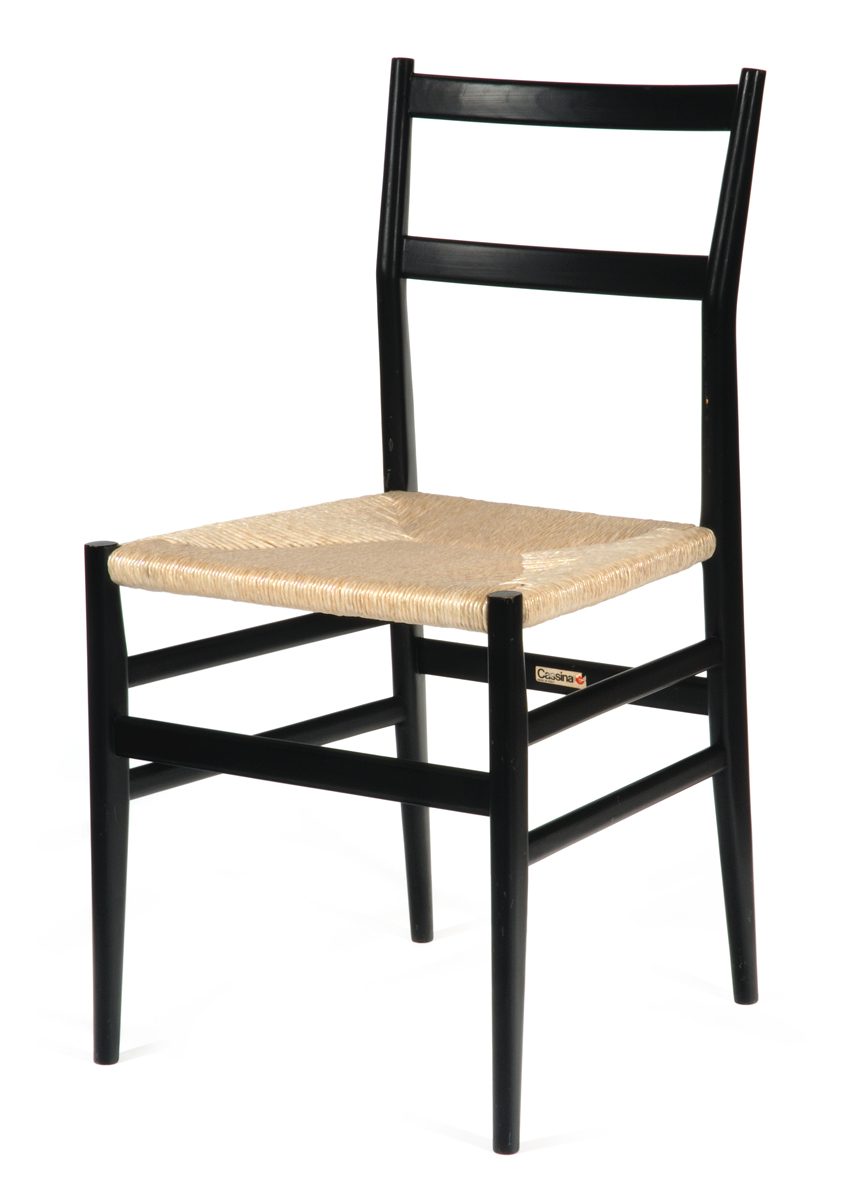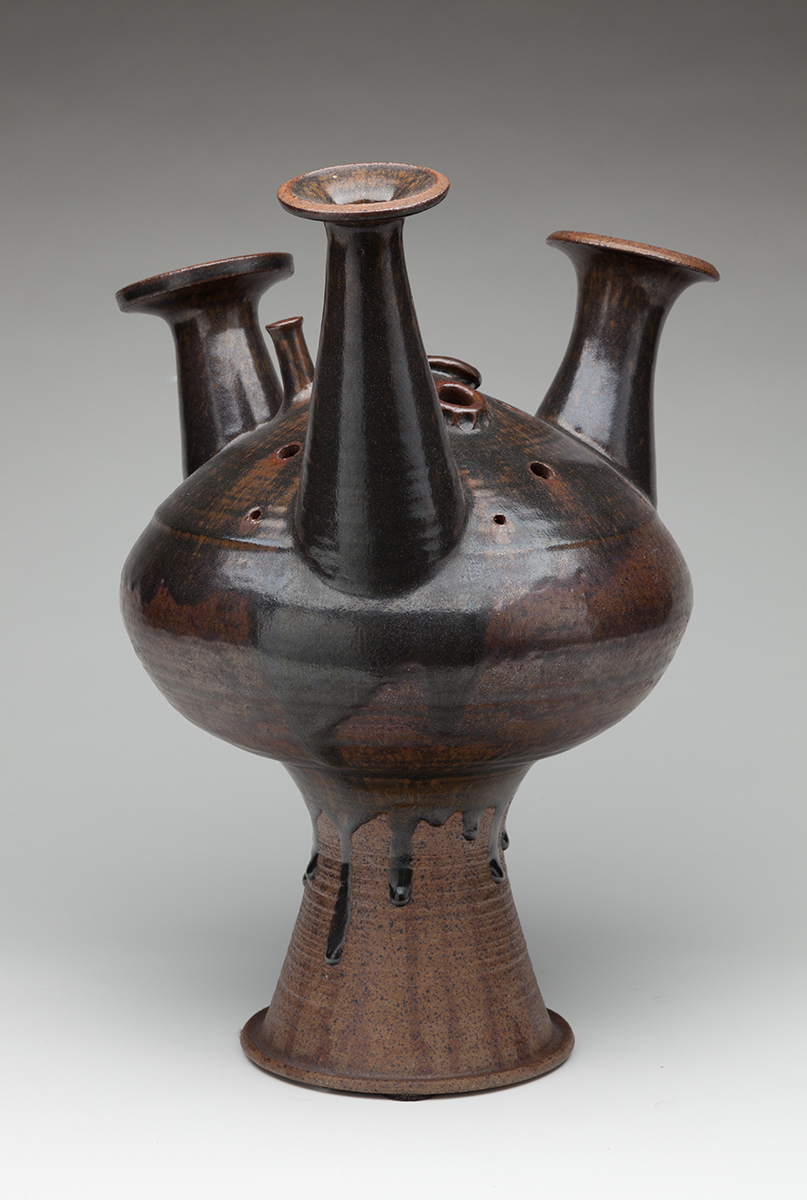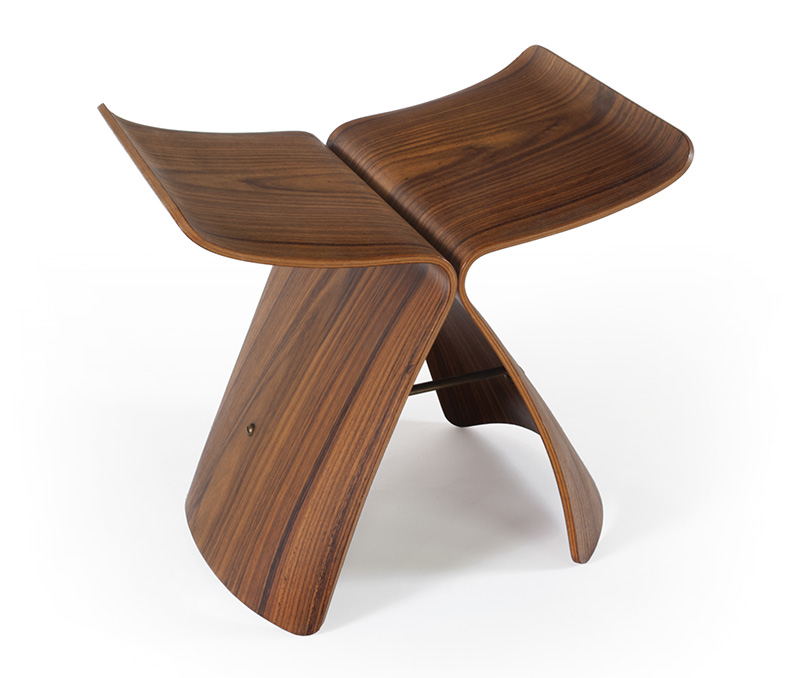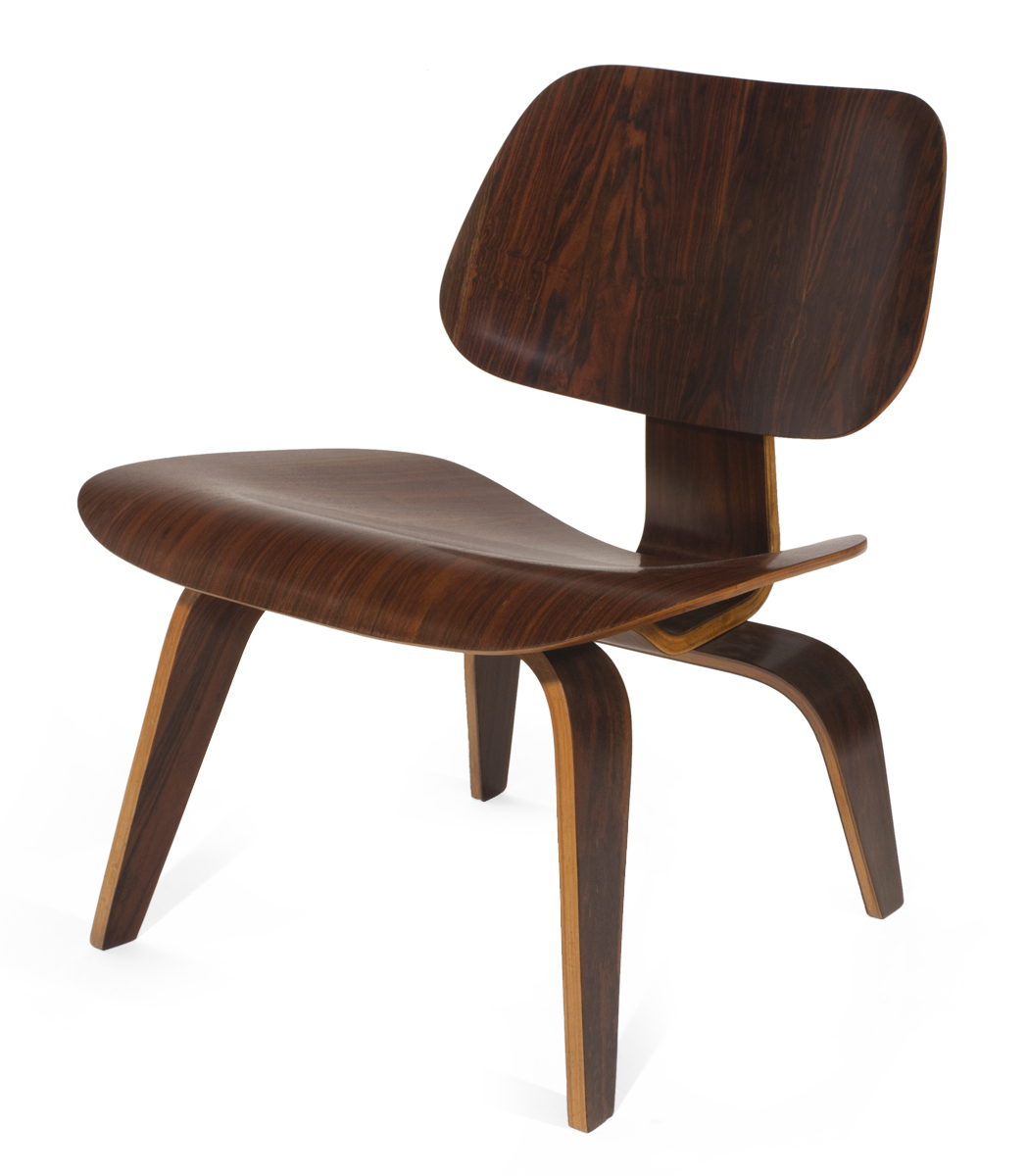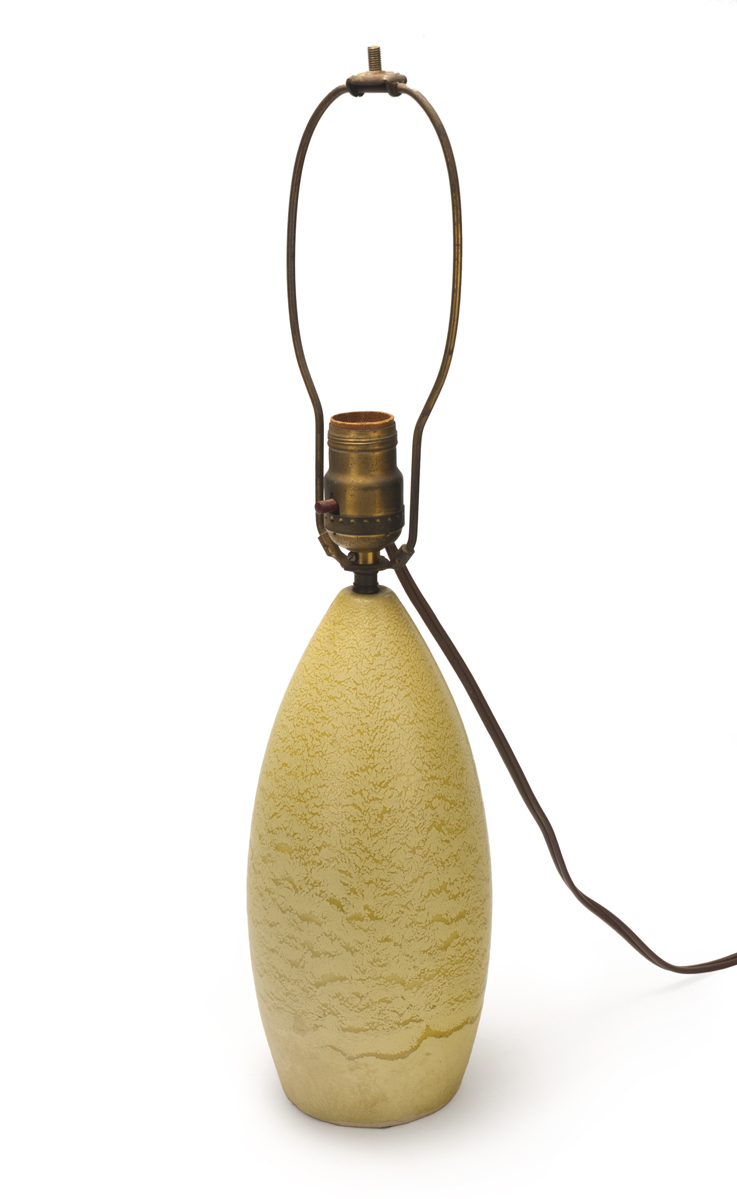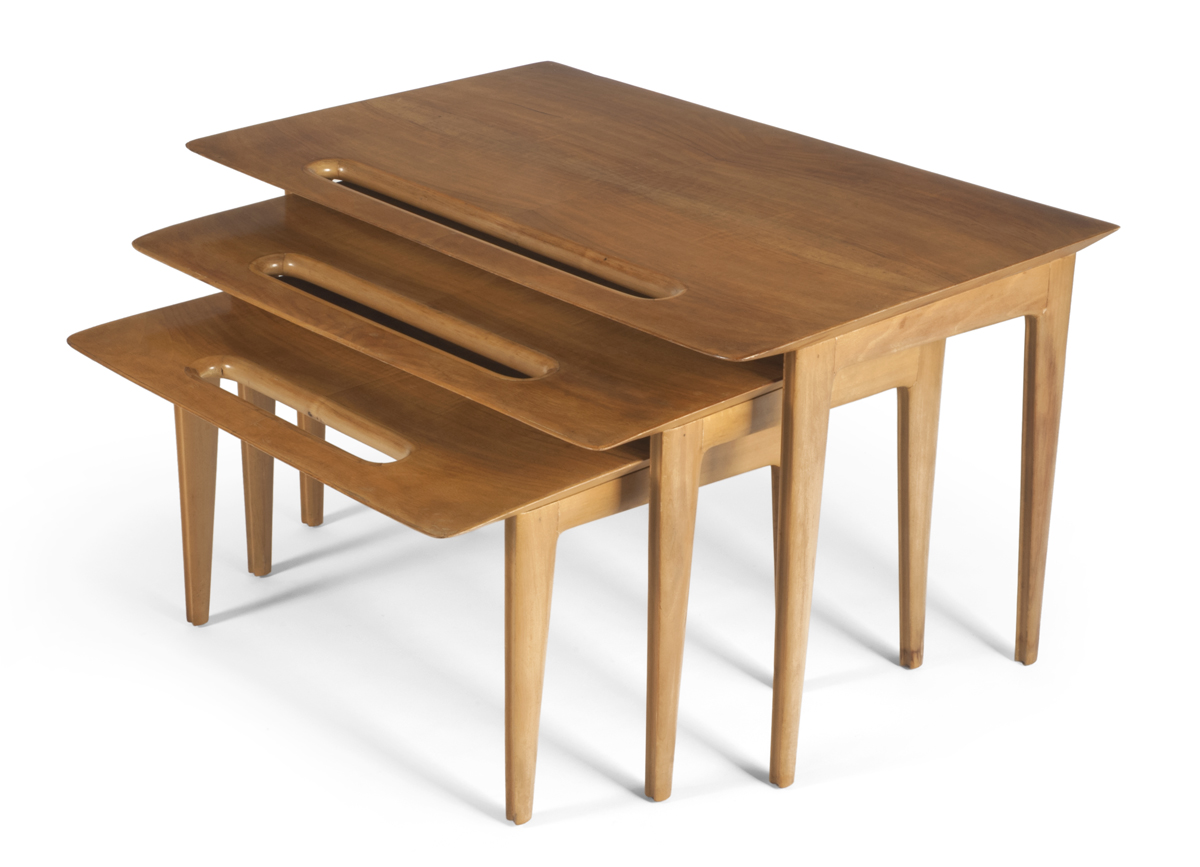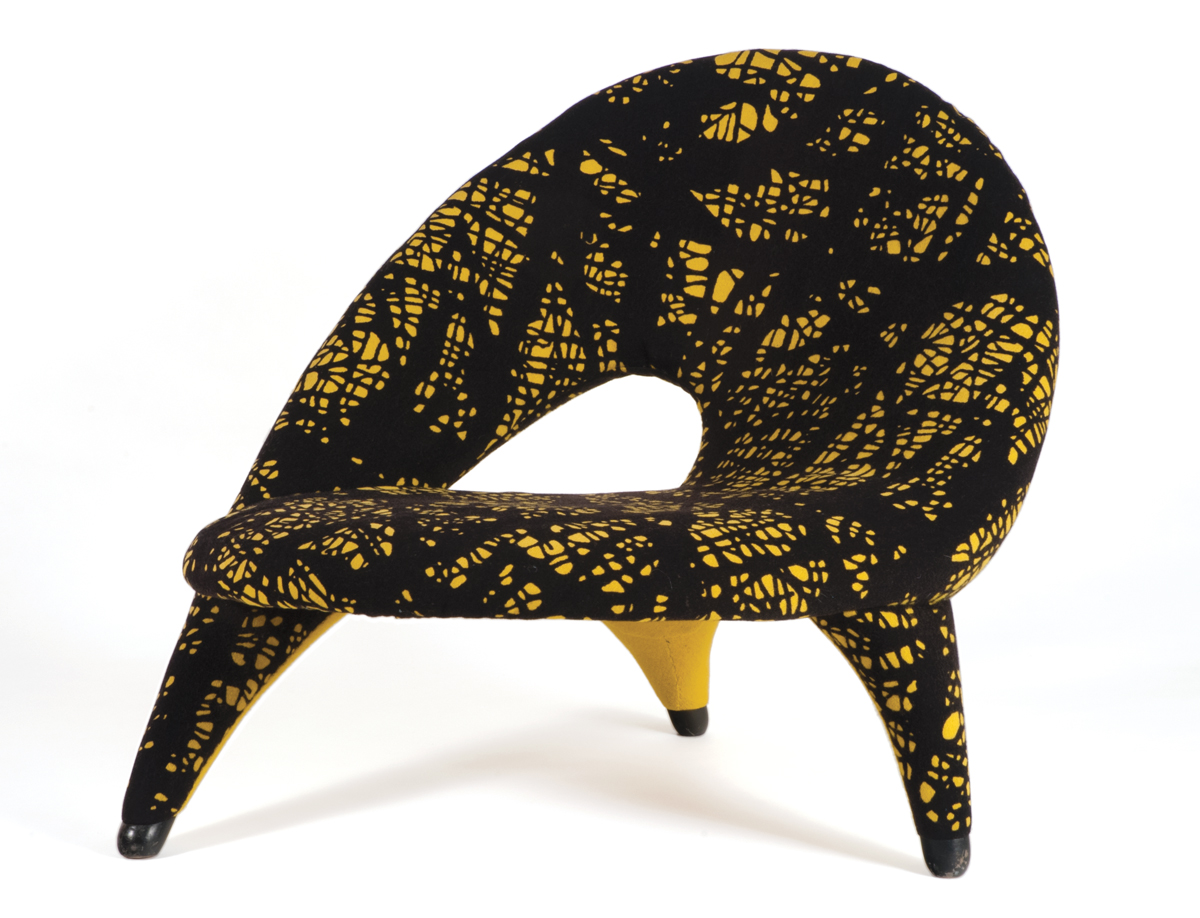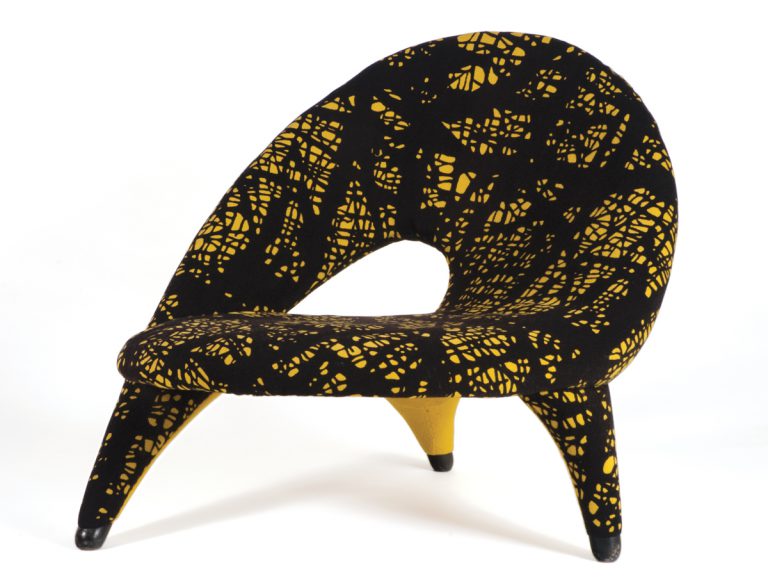
Arabesque Lounge Chair
Design Date 1955
Designer Folke Jansson (b. 1920, Swedish)
Manufacturer Wingrantz Möbelindustri AB, Sweden
Media wood and cloth upholstery
Dimensions 29 1/4 x 28 1/2 x 35 inches
The Arabesque lounge chair (sometimes listed as Arabesk, the Swedish spelling) by Swedish designer Folke Jansson is unusual for its three-legged design. The front legs splay out at different angles due to the asymmetry of the chair’s back and seat, which are comprised of one arc creating a seat for comfortable lounging. Jansson made the first Arabesque chair as a model, hoping to have the chair made for his home. The manufacturer liked it, leading to its debut at the Stockholm Fair of 1955. The chair was considered remarkably avant-garde and it gained some recognition at the fair, but Jansson’s life quickly returned to normal afterwards. Less than 100 were produced. The Arabesque chair went on to lead a rather glamorous life and managed to make its way across the globe and into museums, exhibited as created by an anonymous designer. It would not be until Jansson was about 77 years old that he would learn that his chair was internationally celebrated and reproductions were being made. Museums and dealers then began to credit Jansson. The chair seems to be Jansson’s most notable design and perhaps his only foray into furniture making. The word arabesque has several meanings, all of which seem appropriate to the chair. It refers to a ballet posture in which the body is bent forward from the hip on one leg with one arm extended forward and the other arm and leg backward. Arabesque can also mean an elaborate or intricate pattern, like the original upholstery.
ON VIEW in Modern Gallery 7
Markings Partial sticker label on bottom, "Wincrantz" and a circular manufacturer's logo mark with "MSW"
Credit Line Collection Kirkland Museum of Fine & Decorative Art
Accession Number 2010.0120

